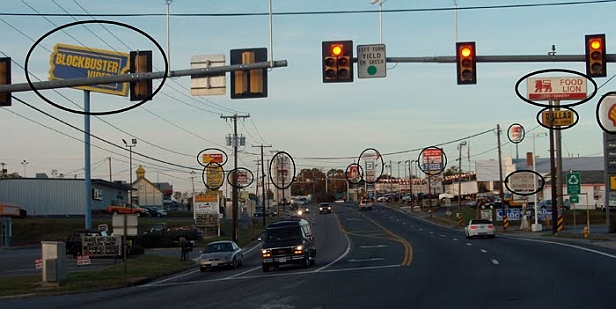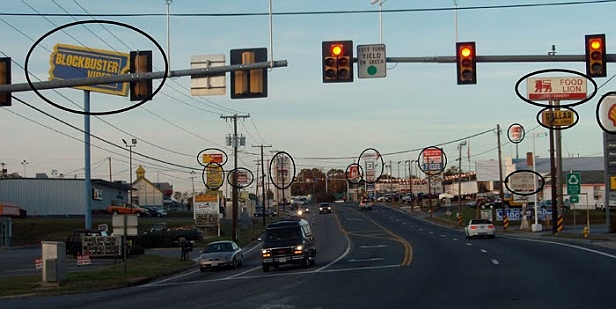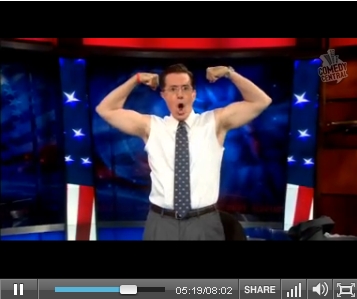It’s no secret that there are lots of chain businesses in sprawling areas and relatively more independent businesses in urban cores. The blog Discover Urbanism has a fascinating explanation of how the built environment determines the kinds of businesses — and the types of marketing — that succeed in a given place:
The urban and the sprawl environment lead to very different ways of doing business. For example, take the standard retail or food service operation. If you’ve set up shop in sprawl, you have a matter of seconds to make your potential customer want to stop and come in. This is simply because he is traveling 45 miles an hour and experiencing the outdoors through a windshield.
 Courtesy Discovering Urbanism
Courtesy Discovering Urbanism
This forces you to decouple the marketing from the actual customer interface and reconnect it back again through branding. The hope is that Joe driver has built enough of a positive experience through television commercials and other ads beforehand that they all come rushing back to him the moment he sees your brand hoisted on a sign above the highway. This process tends toward economies of scale in a big way, hence the dominant position of franchises and multinational companies. [Emphasis mine]
The alternative:
The customer interface in an urban environment has the ability to be more prolonged and textured. The proverbial window shopping experience piques the imagination of customers by putting actual products right in front of them. The window display can be changed, so the experience changes with time. The chalk board announces the special of the day. Perhaps there are smells wafting out from the bakery, or the familiar clanging of glasses alerting the customer to the bustle of a restaurant inside. The retail environment can spill out onto the public realm and beckon passers-by to ease themselves in, something William H. Whyte called the “sensory street.”
Window displays and other marketing aimed at pedestrians can be much more idiosyncratic and nuanced than blink-and-it’s-gone offramp signs. They can do what advertising so rarely does: provide information about products — say, displaying the shoes for sale. That’s not to say urban advertising doesn’t make crass emotional appeals. Ads on the sides of busses seem to function nearly the same as highway billboards do.
On a purely aesthetic front, urban development seems to provide more interesting ads than sprawl does. If we’ve got to live in an ad-saturated world, they might as well portray actual businesses and products, rather than brands. More importantly, urban-style neighborhoods give independent businesses a better shot at succeeding, which brings all sorts of benefits.



